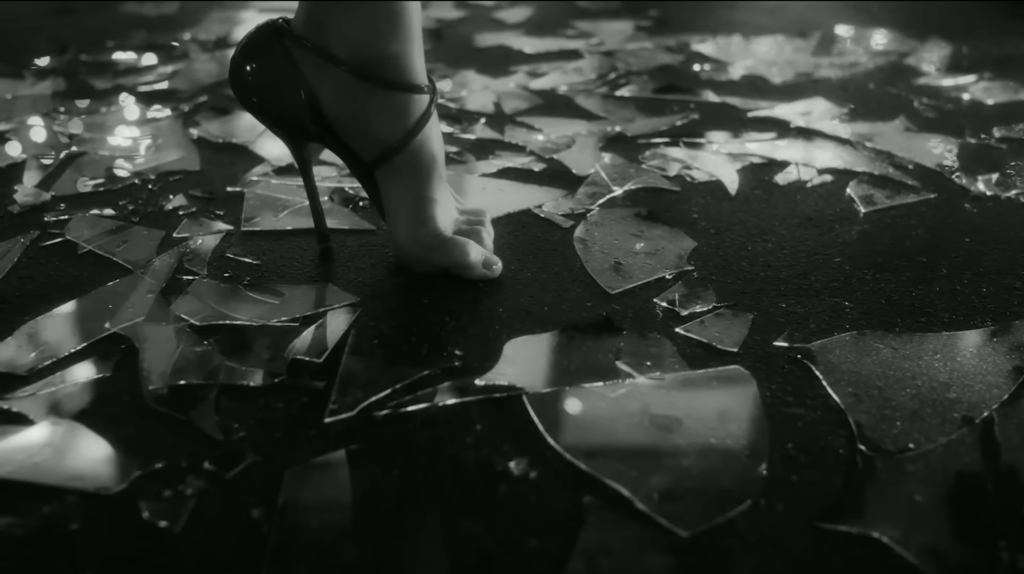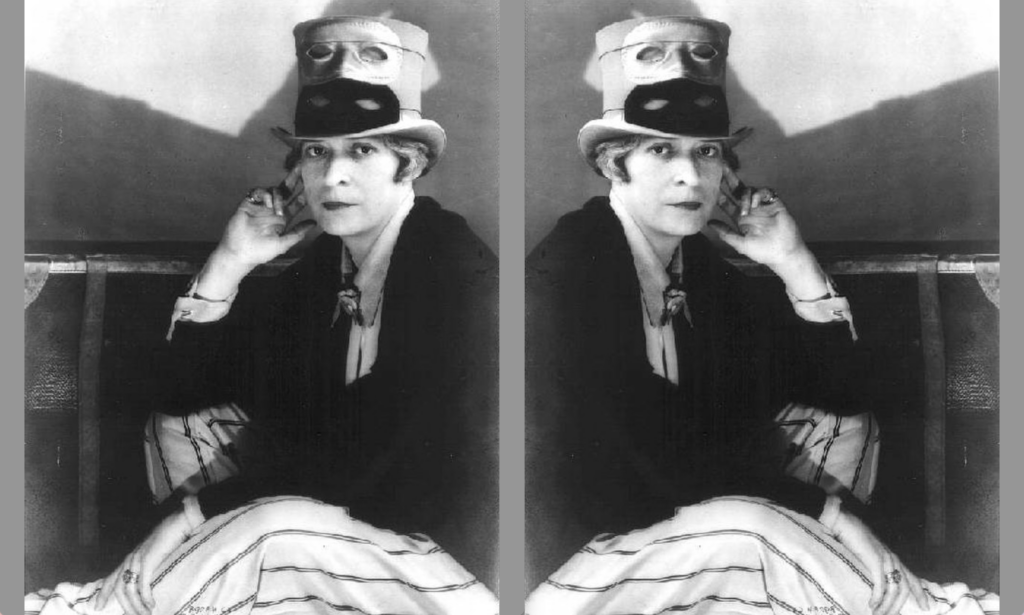Screenshot of Baz Luhrmann’s movie for the Maison Margiela Artisanal Collection.
America has a perfect round ass. We watch her mount a McMansion staircase from a low angle, the framing as deliberate as it is haphazard. The camera is handheld. America has been ironing; the green polo shirt she was pressing, however, looks like it was made from the kind of polyester blend that’s spared wrinkles no matter how badly you treat it. She carries the green shirt in one hand. With the other she grips the metal railing for balance. Her stilettos click loudly on the terra-cotta tile. Each step is measured. In the background, a sparse but funky beat.
The home in which America Moore performs is Mediterranean, or maybe Tuscan. The walls are a luscious cream with butterscotch undertones. Iron balusters with rounded knuckles adorn a winding staircase spanning at least three floors. The statement windows flanking the staircase are tall, narrow, and arched. The camera struggles to compensate for the sunlight beaming through them, resulting in blown-out portions of the image. America disappears momentarily behind a support beam that’s been drywalled over and painted the same tea-stained-paper shade as the walls. There’s a potted fern at the edge of the frame.
The action between America and her costar remains contained to the staircase, though we catch glimpses of a living room suite beyond the fern. Two cream sofas with wooden feet are arranged opposite each other, creating a conversational setup. Between them is an oval coffee table placed on a rectangular area rug that’s an ebony shade of brown. In some frames, in which just a corner of the rug is visible, it could be mistaken for soil strewn on the tile floor. It’s difficult to discern the material of the coffee table, as one of the decorative objects resting on it produces a glare that obscures most details. Perhaps it’s polished mahogany. The configuration of furniture positioned to face the table includes a Biedermeieresque upholstered stool the performers also avoid, though it is perhaps the piece that would best accommodate a scene. We know America doesn’t live here. Most likely someone has rented the house for the shoot.
—Whitney Mallett
Copyright
© The Paris Review




















